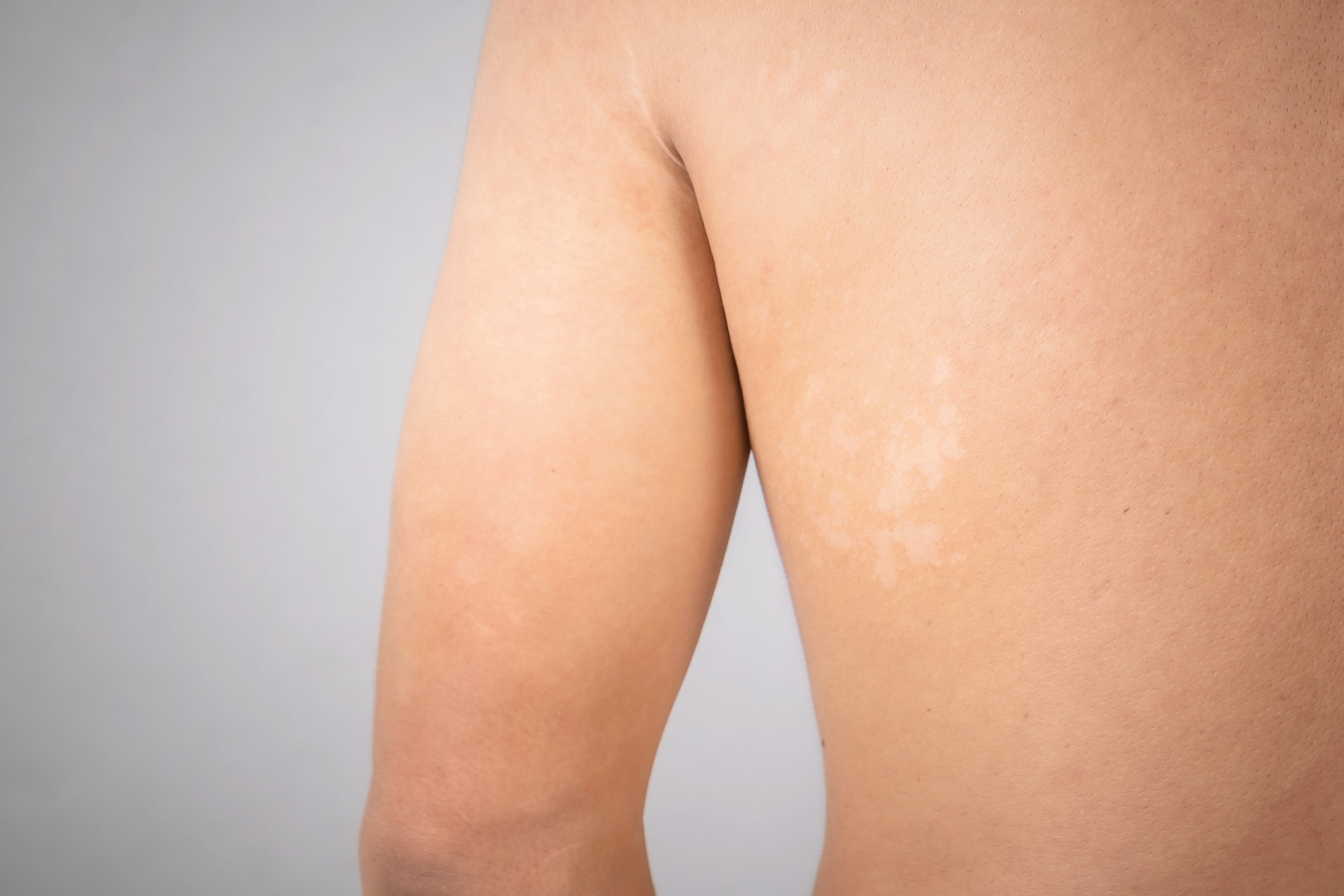Cart
0
Tinea versicolor, a common fungal infection of the skin, can often go unnoticed or be mistaken for other skin conditions. However, with a keen eye and some knowledge, you can learn to recognize the signs and symptoms of tinea versicolor in the comfort of your own home. In this blog post, we will share valuable tips to help you diagnose tinea versicolor accurately, empowering you to take proactive steps towards effective treatment.
1. Understand the Basics:
Before diving into self-diagnosis, it's essential to understand what tinea versicolor is. Tinea versicolor is caused by an overgrowth of a natural yeast called Malassezia that resides on the skin. This overgrowth leads to the development of discolored patches, usually on the chest, back, shoulders, and neck. The patches may be lighter or darker than the surrounding skin and can be pink, tan, or brown in color.
2. Observe the Skin:
Start by examining your skin closely in well-lit surroundings. Look for any areas that appear discolored or have uneven pigmentation. Tinea versicolor typically manifests as small, scaly patches that may merge to form larger areas. These patches often have a fine, powdery appearance and can be itchy or mildly irritated.
3. Rule Out Similar Conditions:
Tinea versicolor shares similarities with other skin conditions such as vitiligo, eczema, psoriasis, and even sunspots. While these conditions differ in their causes and treatments, they can sometimes be confused with tinea versicolor. Educate yourself about these conditions to differentiate them from tinea versicolor accurately. If you're unsure, consulting a healthcare professional is recommended.
4. Conduct the "Scratch Test":
Performing a simple scratch test can help reveal the diagnostic clues for tinea versicolor. Gently scratch the affected area with a fingernail or a blunt object. If the scratched area turns white and becomes more noticeable than before, it's likely tinea versicolor. This test indicates the presence of Malassezia yeast, which causes the affected skin to become hypopigmented when disturbed.
5. Pay Attention to Weather and Sun Exposure:
Tinea versicolor often becomes more apparent in warm and humid climates, as heat and humidity provide an ideal environment for fungal growth. Additionally, exposure to sunlight may accentuate the contrast between the affected and unaffected skin. Take note of any changes in the appearance of the patches based on weather conditions and sun exposure.
6. Compare with Previous Photos:
If you suspect you may have tinea versicolor, compare your current skin condition with older photos. Look for any noticeable changes or the emergence of new patches over time. This can help track the progression of the infection and provide valuable insights for diagnosis.
Conclusion:
Diagnosing tinea versicolor at home requires careful observation and knowledge of the characteristic signs and symptoms. By familiarizing yourself with the appearance and behavior of this fungal infection, you can make an informed assessment of your skin's condition. However, it's important to remember that self-diagnosis is not a substitute for professional medical advice. If you suspect tinea versicolor or have any doubts, it's always advisable to consult a dermatologist for an accurate diagnosis and appropriate treatment.
1. Understand the Basics:
Before diving into self-diagnosis, it's essential to understand what tinea versicolor is. Tinea versicolor is caused by an overgrowth of a natural yeast called Malassezia that resides on the skin. This overgrowth leads to the development of discolored patches, usually on the chest, back, shoulders, and neck. The patches may be lighter or darker than the surrounding skin and can be pink, tan, or brown in color.
2. Observe the Skin:
Start by examining your skin closely in well-lit surroundings. Look for any areas that appear discolored or have uneven pigmentation. Tinea versicolor typically manifests as small, scaly patches that may merge to form larger areas. These patches often have a fine, powdery appearance and can be itchy or mildly irritated.
3. Rule Out Similar Conditions:
Tinea versicolor shares similarities with other skin conditions such as vitiligo, eczema, psoriasis, and even sunspots. While these conditions differ in their causes and treatments, they can sometimes be confused with tinea versicolor. Educate yourself about these conditions to differentiate them from tinea versicolor accurately. If you're unsure, consulting a healthcare professional is recommended.
4. Conduct the "Scratch Test":
Performing a simple scratch test can help reveal the diagnostic clues for tinea versicolor. Gently scratch the affected area with a fingernail or a blunt object. If the scratched area turns white and becomes more noticeable than before, it's likely tinea versicolor. This test indicates the presence of Malassezia yeast, which causes the affected skin to become hypopigmented when disturbed.
5. Pay Attention to Weather and Sun Exposure:
Tinea versicolor often becomes more apparent in warm and humid climates, as heat and humidity provide an ideal environment for fungal growth. Additionally, exposure to sunlight may accentuate the contrast between the affected and unaffected skin. Take note of any changes in the appearance of the patches based on weather conditions and sun exposure.
6. Compare with Previous Photos:
If you suspect you may have tinea versicolor, compare your current skin condition with older photos. Look for any noticeable changes or the emergence of new patches over time. This can help track the progression of the infection and provide valuable insights for diagnosis.
Conclusion:
Diagnosing tinea versicolor at home requires careful observation and knowledge of the characteristic signs and symptoms. By familiarizing yourself with the appearance and behavior of this fungal infection, you can make an informed assessment of your skin's condition. However, it's important to remember that self-diagnosis is not a substitute for professional medical advice. If you suspect tinea versicolor or have any doubts, it's always advisable to consult a dermatologist for an accurate diagnosis and appropriate treatment.




